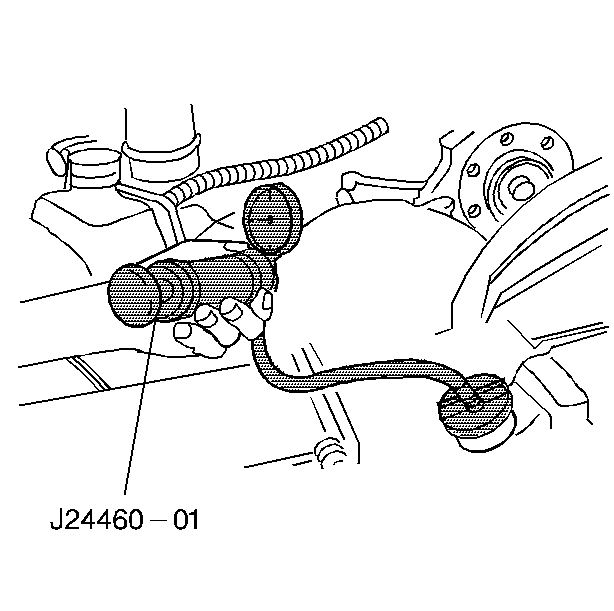Tools Required
J 24460-01 Cooling System Pressure Tester
- Remove the pressure cap.
- Test the operation of the pressure cap. Refer to Pressure Cap Testing .
- Use the J 24460-01 in order to apply pressure to the cooling system.
- The cooling system should hold the rated pressure for at least 2 minutes.
- Repair any leaks as required.
Caution: Under pressure, the temperature of the solution in the radiator can be considerably higher, without boiling. Removing the radiator cap while the engine is hot (pressure is high), will cause the solution to boil instantaneously, with explosive force. The solution will spew out over the engine, fenders, and the person removing the cap. Serious bodily injury may result. Flammable antifreeze, such as alcohol, is not recommended for use at any time. Flammable antifreeze could cause a serious fire.
Caution: In order to help avoid being burned, do not remove the radiator cap while the engine and the radiator are hot. Scalding fluid and steam can be blown out under pressure if the cap is removed too soon.

Do not exceed the pressure cap rating.
Observe the gage for any pressure loss.
Tools Required
| • | J 24460-01 Cooling System Pressure Tester |
| • | J 42401 Radiator Cap / Surge Tank Test Adapter |
Cooling System Leak Testing
- Remove the pressure cap.
- Test the operation of the pressure cap. Refer to Pressure Cap Testing.
- Wash the pressure cap mating surface with water.
- Use the J 24460-01 with J 42401 in order to apply pressure to the cooling system.
- The cooling system should hold the rated pressure for at least 2 minutes.
- Repair any leaks as required.
Caution: Under pressure, the temperature of the solution in the radiator can be considerably higher, without boiling. Removing the radiator cap while the engine is hot (pressure is high), will cause the solution to boil instantaneously, with explosive force. The solution will spew out over the engine, fenders, and the person removing the cap. Serious bodily injury may result. Flammable antifreeze, such as alcohol, is not recommended for use at any time. Flammable antifreeze could cause a serious fire.
Caution: In order to help avoid being burned, do not remove the radiator cap while the engine and the radiator are hot. Scalding fluid and steam can be blown out under pressure if the cap is removed too soon.
Do not exceed the pressure cap rating.
Observe the gage for any pressure loss.
